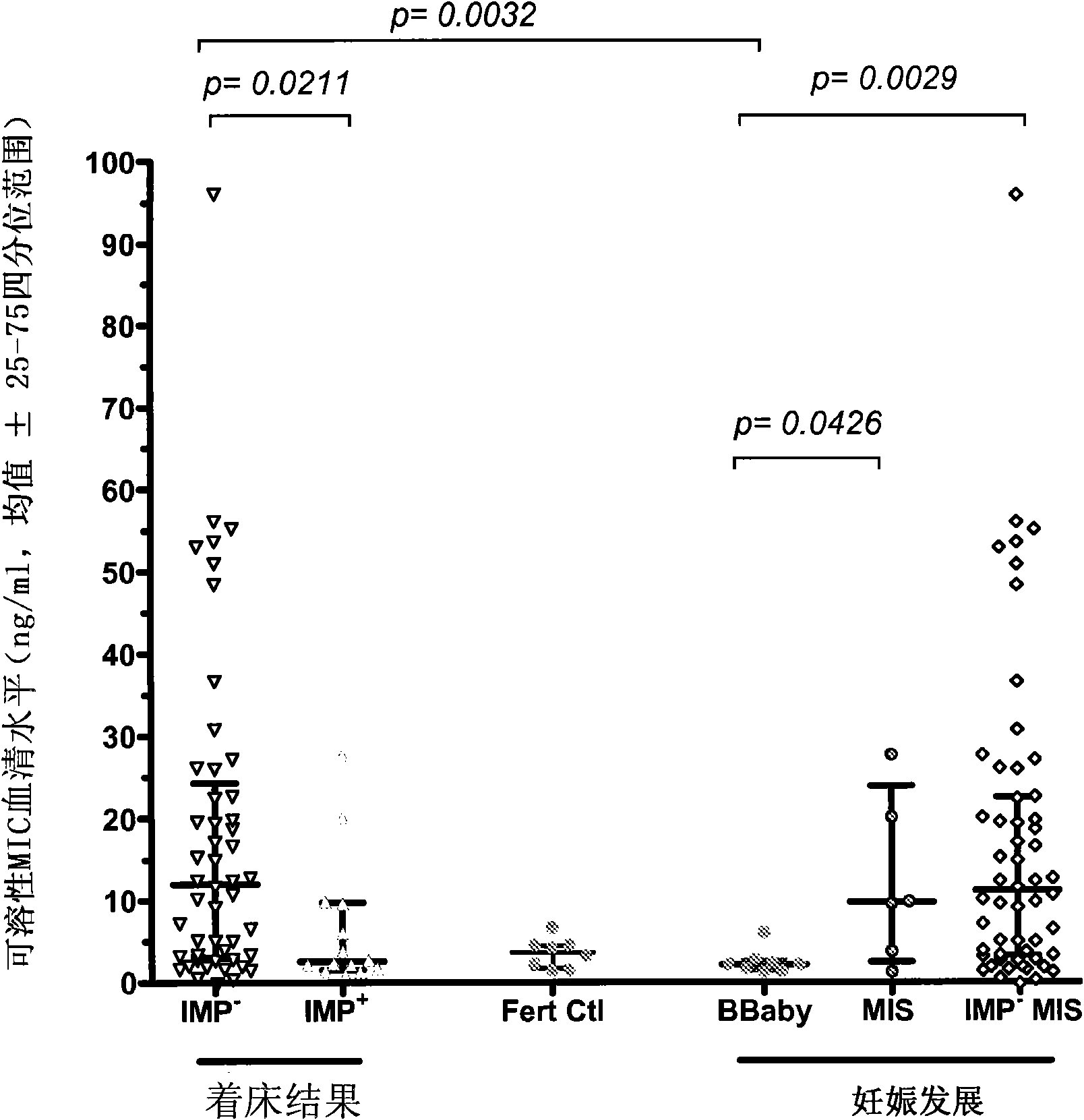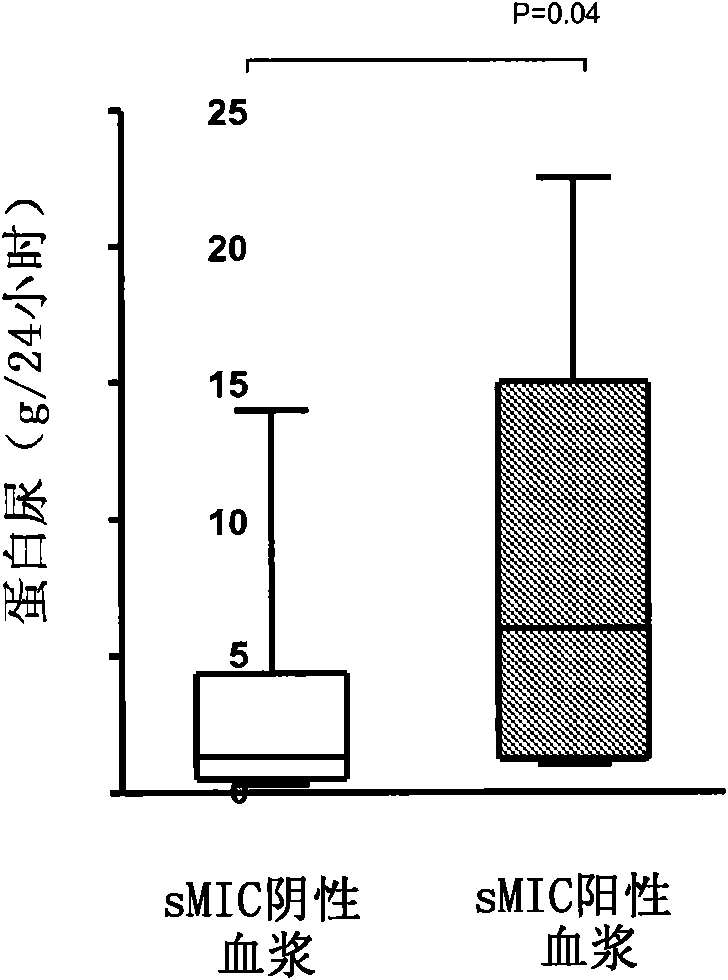Biomarker for the medicine and the biology of the reproduction
A sample, serum technology, used in predictive markers, reproductive medicine and biology, to solve problems such as difficult evaluation
- Summary
- Abstract
- Description
- Claims
- Application Information
AI Technical Summary
Problems solved by technology
Method used
Image
Examples
Embodiment 1
[0073] Example 1: Serum levels of soluble MIC are predictive markers of implantation failure and successful term pregnancy following in vitro fertilization.
[0074] Uterine NK (uNK) is the major lymphocyte population found at the implantation site of the embryo and progressively disappears after the second trimester. Thus, intrinsic immune mechanisms at work in the mother are thought to have a powerful influence in the acceptance of a hemi-allogeneic fetus. In particular, uNK receptors recognize parental / trophoblast ligands that protect the fetus from attack by the maternal immune system.
[0075]The presence in embryonic supernatants of soluble HLA-G, a known NK-inhibiting ligand that is normally expressed at the fetal-maternal interface, is associated with higher embryo implantation rates after in vitro fertilization (IVF) (Fuzzi et al., 2002 ; Warner et al., 2004). Interactions between killer cell immunoglobulin receptors (KIRs) on maternal uNK and fetal HLA-C also affec...
Embodiment 2
[0105] Example 2: High Frequency of Soluble MIC Found in Plasma of Women with Vascular Pregnancy Disease
[0106] Pregnancy creates a unique state in which extensive angiogenesis and the establishment of maternal immune tolerance allow successful fetal and placental development. Communication between trophoblast fetal cells and maternal immune cells regulates placental development, angiogenesis, and fetal immune tolerance in early pregnancy. Insufficient placenta formation leads to vascular pregnancy disorders (VPD), including preeclampsia (PE), intrauterine growth retardation (IUGR) and recurrent pregnancy loss, which represent a major cause of feto-maternal morbidity and mortality. Preeclampsia is characterized by high blood pressure and proteinuria after 20 weeks of pregnancy. Despite recent advances in understanding how inadequate placental vascularization (incomplete remodeling of the spiral arteries) can lead to vascular pregnancy disorders, their prognosis remains seve...
Embodiment 2a
[0108] Materials and methods
[0109] subjects
[0110] Soluble MIC plasma levels were evaluated in 49 women who experienced vascular pregnancy disease (VPD), including vascular intrauterine growth retardation (IUGR), preeclampsia (PE) or intrauterine fetal death (IUFD) , and compared to a plasma control group from 53 women with normally undergoing pregnancies matched for gestational duration (mean 29 weeks).
[0111] method
[0112] PE is defined as arterial diastolic blood pressure greater than 90mm Hg, systolic blood pressure greater than 140mmHg, combined with proteinuria (more than 300mg / 24h). In addition, serious maternal complications associated with an increased risk of adverse maternal and fetal outcomes, particularly associated with HELLP syndrome (H = hemolysis; EL = increased liver enzymes; and LP = low platelets) have been reported (Weinstein et al., 2005 ) and oliguria leading to renal failure.
[0113] Vascular IUGR was defined as measured by sonography, ges...
PUM
 Login to View More
Login to View More Abstract
Description
Claims
Application Information
 Login to View More
Login to View More - R&D
- Intellectual Property
- Life Sciences
- Materials
- Tech Scout
- Unparalleled Data Quality
- Higher Quality Content
- 60% Fewer Hallucinations
Browse by: Latest US Patents, China's latest patents, Technical Efficacy Thesaurus, Application Domain, Technology Topic, Popular Technical Reports.
© 2025 PatSnap. All rights reserved.Legal|Privacy policy|Modern Slavery Act Transparency Statement|Sitemap|About US| Contact US: help@patsnap.com



